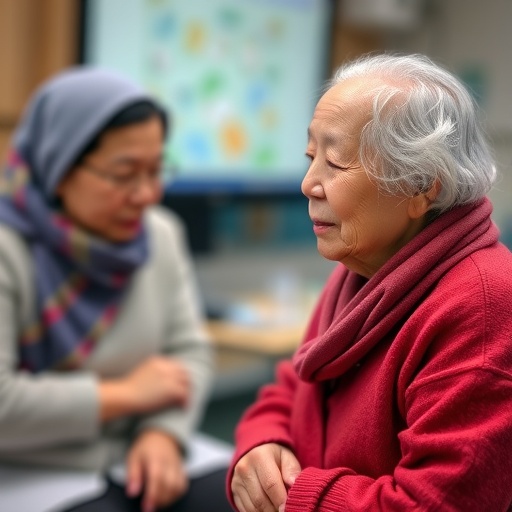Study examines the role of small molecule in children with a rare liver disease

Credit: UCLA Health
UCLA researchers who previously found that intravenous administration of fish oil can treat a rare but potentially deadly form of liver disease in children have now monitored levels of a small molecule at the center of the disorder to track treatment results. In a new study, they also have identified the way specific genes change after fish oil treatment is started.
“Our study sheds light on some of the mechanisms by which IV fish oil helps treat this disease. It also suggests that measuring levels of the molecule might someday be used to diagnose and monitor this and other liver diseases without the need for biopsies,” said Dr. Kara L. Calkins, first author of a study published in the Journal of Nutrition. She participated in the study with colleagues at the Neonatal Research Center of the UCLA Children’s Discovery and Innovation Institute, the David Geffen School of Medicine at UCLA, and UCLA Mattel Children’s Hospital.
When the liver suffers damage, the small molecule, micro-RNA 122, or miR-122, is released into the bloodstream. The researchers said this is the first study to measure miR-122 in children with intestinal failure-associated liver disease, or IFALD. Risk factors for the disease include prematurity, sepsis, and altered intestinal permeability, a digestive condition in which bacteria and toxins are able to “leak” through the intestinal wall.
The study involved 14 children ages 3 months to 5 years old who were successfully treated with pure fish oil administered intravenously. Blood samples were collected at various times throughout the study to measure the level of the molecule in their bodies. Calkins said larger clinical trials will be needed to confirm results.
“Liver disease is a major health problem that can result in liver failure, the need for a liver transplant or even death,” said Dr. Sherin Devaskar, lead author of the study and physician-in-chief of UCLA Mattel Children’s Hospital and professor of pediatrics at the David Geffen School of Medicine. Because laboratory tests are not always accurate in predicting or diagnosing the disease, liver biopsy is the current standard treatment.
“One of our research goals is to find inexpensive, practical and accurate tests that predict and diagnose liver disease and provide an accurate measure of treatment response,” Devaskar said. “This study suggests that plasma miR-122 may serve as a noninvasive marker of liver disease in children with IFALD, and we believe it could be an important surrogate for other liver diseases.”
###
In addition to Calkins and Devaskar, other authors on the study included Shanthie Thamotharan, staff research associate at UCLA, Shubamoy Ghosh, PhD, assistant project scientist in the department of Pediatrics-Neonatology at UCLA, and Yun Dai, MD, PhD, who was a project scientist in the Pediatrics-Neonatology department at UCLA during the time of the study.
Funding was provided from the National Institutes of Health and the UCLA Clinical and Translational Science Institute.
Disclosures: Calkins has received research support from Fresenius Kabi and is a consultant for Fresenius Kabi, the company that manufactures the fish oil used in the study. Fresenius Kabi was not directly involved in this study. The other authors report no conflicts of interest.
Media Contact
Alana Prisco
[email protected]
310-740-4617
Original Source
https:/




